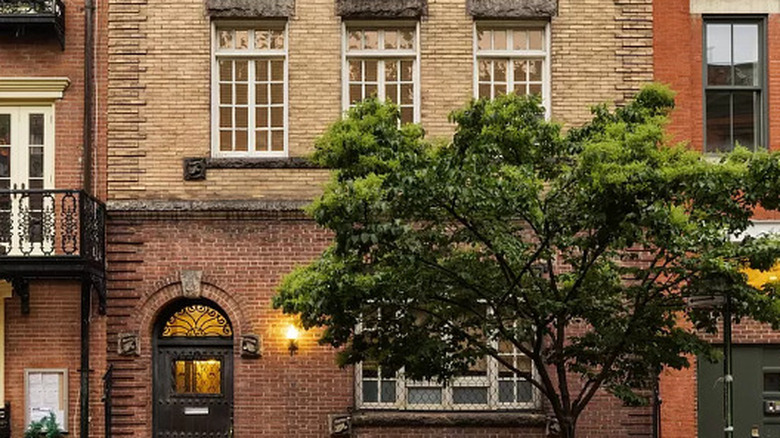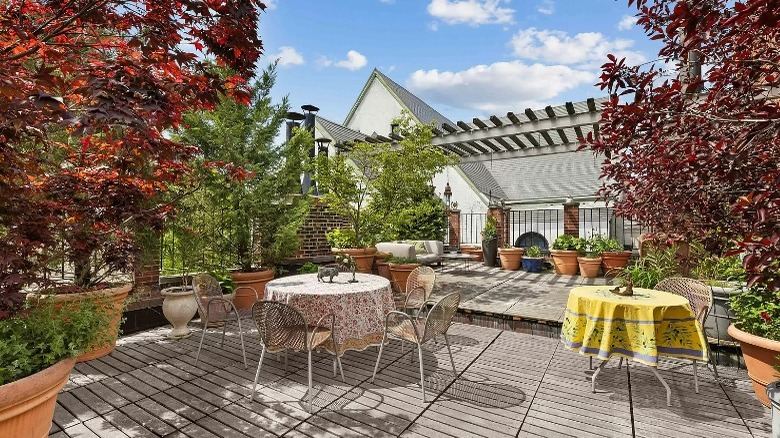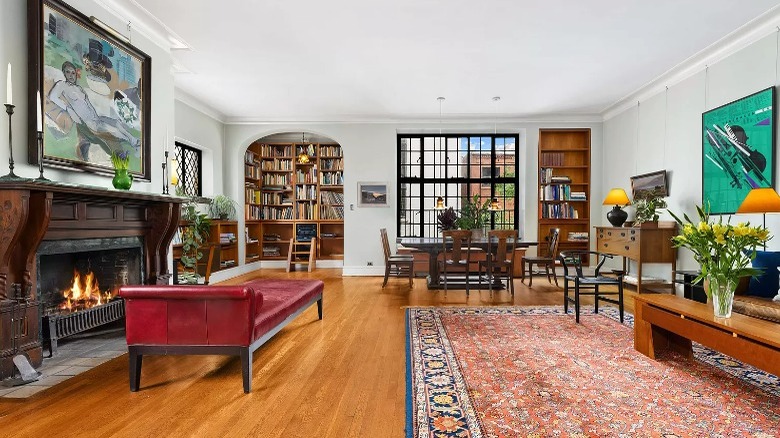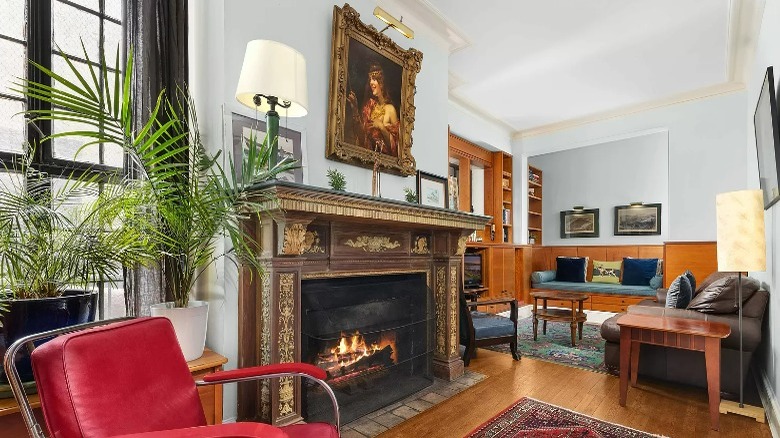Inside The $20 Million NYC Home Nicknamed 'The Castle In The Village'
A photo of the outside of 33 Perry Street in Manhattan's West Village in New York does not do justice to its history, nor the stunning interior, which was renovated by architect and current owner Carl Pucci, who bought the property in 1982, per New York Post. The three-story townhouse has six bedrooms, six full bathrooms, and a half bathroom in over 6,500 square feet of living space, not including an additional 2,167 square feet in the basement, and is listed for $19.5 million, according to the Corcoran listing team.
The building is currently divided into three separate apartments, each measuring approximately 2,167 square feet. The first floor is currently a one-bedroom space, the second floor has three bedrooms, and the top floor has two bedrooms. However, the building can be converted into a single-family residence. A full rooftop garden is the crowning glory for this amazing property, offering a huge entertainment space, including a raised deck covered with a pergola.
Full rooftop entertainment space
The building's history is as interesting as that of the West Village neighborhood, which is part of Greenwich Village bordered to the west by the Hudson River. According to local historian Tom Miller, the original house was torn down just after the Civil War, in about 1866, and replaced with one of the few private carriage houses and stables in the residential area. The outside of the building appears almost exactly as it did when it was built, except that the street level was refaced with red brick. The original copper cornice, arched windows, rough-cut stone sills, and raised decorative brickwork along the corners of the building maintain the historic appearance. The ceiling heights on each floor range from 10 feet to 14 feet, per Zillow, and large windows, some of which are the original diamond-paned casements, flood the rooms with natural light.
In the early 1920s, the church of St. John the Evangelist purchased the stable and ultimately converted it into a single-family residence which was rented over the years to families with some social standing. During the early part of the 1900s, Greenwich Village, and in particular the West Village, started to become known as a bohemian enclave for its artists, writers, and non-traditional theater groups.
Soaring ceilings and built-in bookshelves
In the 1950s, the church divided the building into apartments, according to Daytonian in Manhattan, and some of the updates from that time appear to still be reflected in at least one "vintage" combination of light yellow, black, and mirrored bathroom tiles, as seen on Zillow. The church owned the building until it was sold to its current owner in 1982. Beautiful hardwood floors, built-in bookshelves, and upholstered reading nooks can be found throughout most of the building.
The front entry opens to a long hall, off of which is the staircase to access the three floors, although perhaps a new owner would add an elevator. The first floor currently includes an almost 600-square-foot architect's studio in what was originally a ballroom, as well as one bedroom, one full bathroom, a powder room, and an open living area with a studio kitchen, as seen in the floor plans from Corcoran. Off the back of the first floor is also a 19-foot by 10-foot garden.
Baronial fireplace from the early 1920s
It's not clear why this property has been called the "Castle in the Village," as per New York Post, other than there is a very ornate fireplace, described as "baronial," which was part of the conversion from stables to residence in the 1920s. Each floor has a fireplace, although all three reflect different styles.
The West Village is considered to be one of the most expensive neighborhoods in New York City, according to Good Migrations. The West Village has gone from a rural area in the 1800s to an upper-class residential area in the early 1900s, followed by iconic nightlife and diversity as it developed over the decades. In 1938, Cafe Society was the first racially integrated nightclub in the U.S., headlining legendary musicians such as Pearl Bailey, Count Basie, Nat King Cole, Ella Fitzgerald, and Lena Horn, to name just a few, per Village Preservation. In the late 1960s, it became a ground-breaking center of activism for the LGBTQ community. It's still considered one of the hippest and most vibrant NYC neighborhoods.



